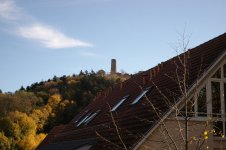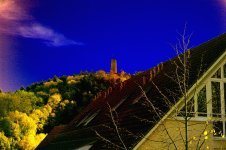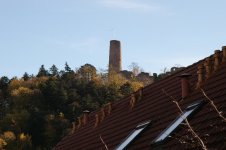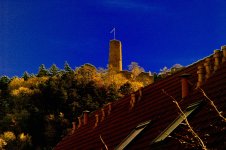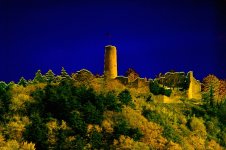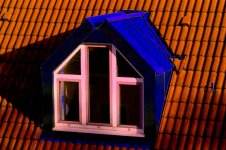kds315
www.macrolenses.de
Group,
just made some first tests and I am quite astonished about the results - R-D1 is quite capable to do reflected UV (ultraviolet) photography (300...400nm)!
I used the Nikon D70 before, but the R-D1 even beats that, although they share the same chip.
Some results here, first the "normal" shot, then the UV differential (shot with CLE 2/40mm + 4/90mm + special UV transmitting UG11x filter);
additionally a 100% crop of the last picture:
just made some first tests and I am quite astonished about the results - R-D1 is quite capable to do reflected UV (ultraviolet) photography (300...400nm)!
I used the Nikon D70 before, but the R-D1 even beats that, although they share the same chip.
Some results here, first the "normal" shot, then the UV differential (shot with CLE 2/40mm + 4/90mm + special UV transmitting UG11x filter);
additionally a 100% crop of the last picture:
Attachments
Last edited:
JeffGreene
(@)^(@)
Klaus:
I am awaiting delivery of my UV filter, and had a question. I was under the impression that one needed an uncoated lens for UV work. The lens you used is coated. Is what you did pure UV. Just wondering, as I have no experience with UV. I was planning on using one of my old uncoated Canon Serenars with the filter. Interesting images!
I am awaiting delivery of my UV filter, and had a question. I was under the impression that one needed an uncoated lens for UV work. The lens you used is coated. Is what you did pure UV. Just wondering, as I have no experience with UV. I was planning on using one of my old uncoated Canon Serenars with the filter. Interesting images!
kds315
www.macrolenses.de
Jeff, you have to be very careful using UV transmitting filters, since all of them, except that very special one I am using, also transmits a serious amount of IR. Since the chip is so much more sensitive to IR than UV, you'll get most likely IR images and not UV images. One cure would be to stack a Schott BG38 or BG40 filter on top of the UV filter (which one do you get btw.?), but this only makes it a bit better, but no full cure. You have to try that out. Shoot a dandelion and see if you get the black centered bullseye pattern, if not, you have IR leak through.
About coated lenses: some coatings allow UV to pass (some up to 320nm), others, esp. the new multicoatings, stop around 400nm, so no chance to shoot UV. An uncoated lens might help, but then the second hindering kicks in - the glass types used. And there is the lens cement which also blocks UV if you have a lens with cemented elements. Look at the lens diagrams and find a lens which has no cemented elements or a very simple lens design like a Cooke triplett, this should work quite well.
The lens I used was tested in my spectrophotometer before and it allows up to 360nm which is sufficient for UV; I was quite astonished since I did not expect that.
About coated lenses: some coatings allow UV to pass (some up to 320nm), others, esp. the new multicoatings, stop around 400nm, so no chance to shoot UV. An uncoated lens might help, but then the second hindering kicks in - the glass types used. And there is the lens cement which also blocks UV if you have a lens with cemented elements. Look at the lens diagrams and find a lens which has no cemented elements or a very simple lens design like a Cooke triplett, this should work quite well.
The lens I used was tested in my spectrophotometer before and it allows up to 360nm which is sufficient for UV; I was quite astonished since I did not expect that.
Attachments
Last edited:
kds315
www.macrolenses.de
JeffGreene said:Klaus:
I am awaiting delivery of my UV filter, and had a question. I was under the impression that one needed an uncoated lens for UV work. The lens you used is coated. Is what you did pure UV. Just wondering, as I have no experience with UV. I was planning on using one of my old uncoated Canon Serenars with the filter. Interesting images!
Jeff, have you been successful doing UV shots? Just wondering...
Cheers, Klaus
Klaus, on your Flickr site you mention an older 50/1.5 lens calibrated for UV.
Which F1.5 lens did you use? I've got one of the Wollensak Raptar 50/1.5's designed for close-up work, and could never find out much about it. It's a beauty of a lens, I've seen a couple marked for O-scope work.
Which F1.5 lens did you use? I've got one of the Wollensak Raptar 50/1.5's designed for close-up work, and could never find out much about it. It's a beauty of a lens, I've seen a couple marked for O-scope work.
Last edited:
kds315
www.macrolenses.de
Brian,
it needs to be tested out, there is no rule, unfortunately. If it is a cemented lens, it may not work (lens cement blocks UV). If it is a higly coated lens with modern muticoating, it may not work either (multicoatings block UV). If the lens designer used some special high refractive glass types, it may not work (which might be the case with that Raptar). I have some Graphic Raptars which work pretty well, as do the Minolta CLE series of lenses (28/40/90mm).
All I can say is, get an UV filter (best is the Baader U-filter) and make some tests....
it needs to be tested out, there is no rule, unfortunately. If it is a cemented lens, it may not work (lens cement blocks UV). If it is a higly coated lens with modern muticoating, it may not work either (multicoatings block UV). If the lens designer used some special high refractive glass types, it may not work (which might be the case with that Raptar). I have some Graphic Raptars which work pretty well, as do the Minolta CLE series of lenses (28/40/90mm).
All I can say is, get an UV filter (best is the Baader U-filter) and make some tests....
Share:

